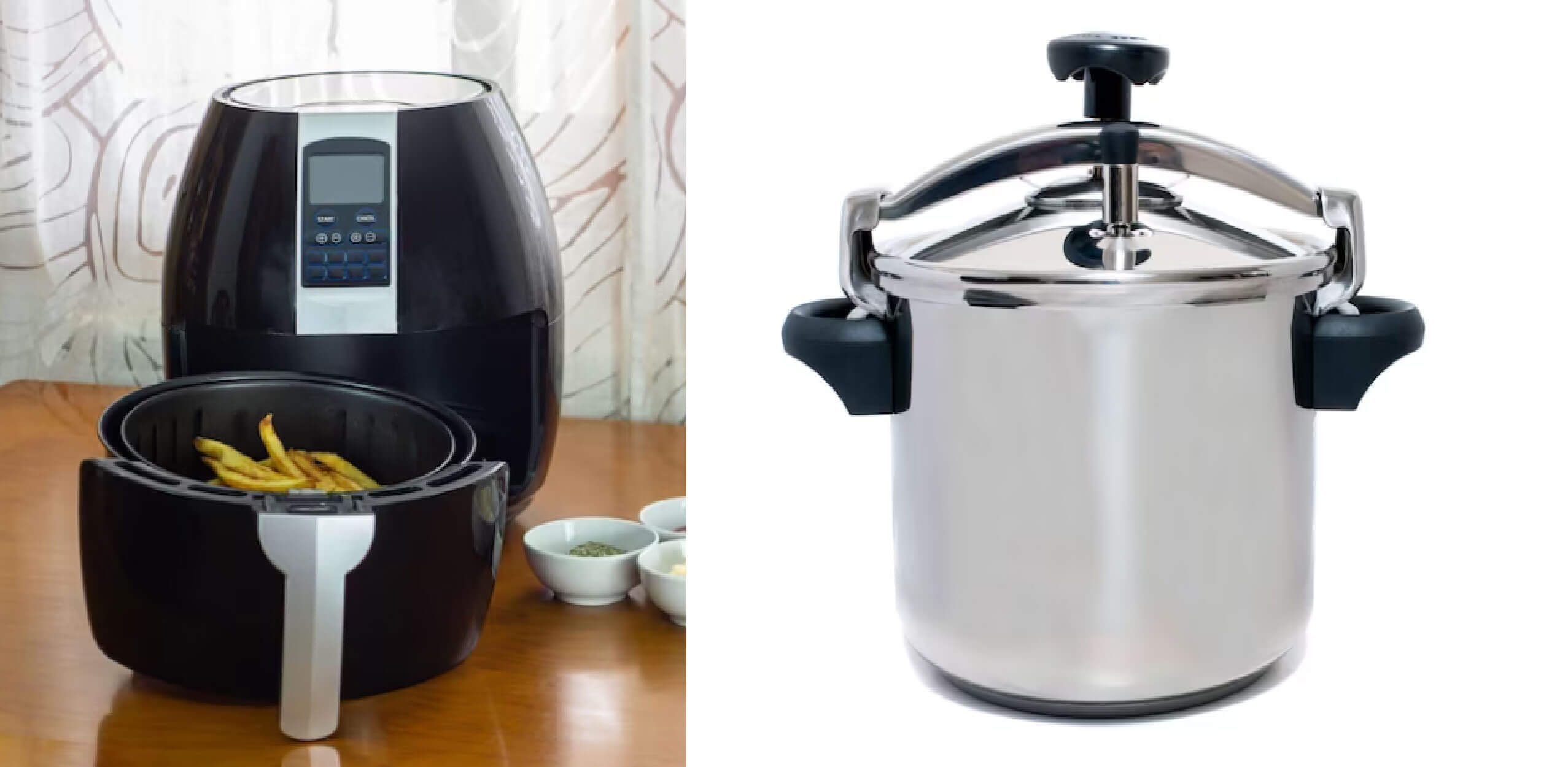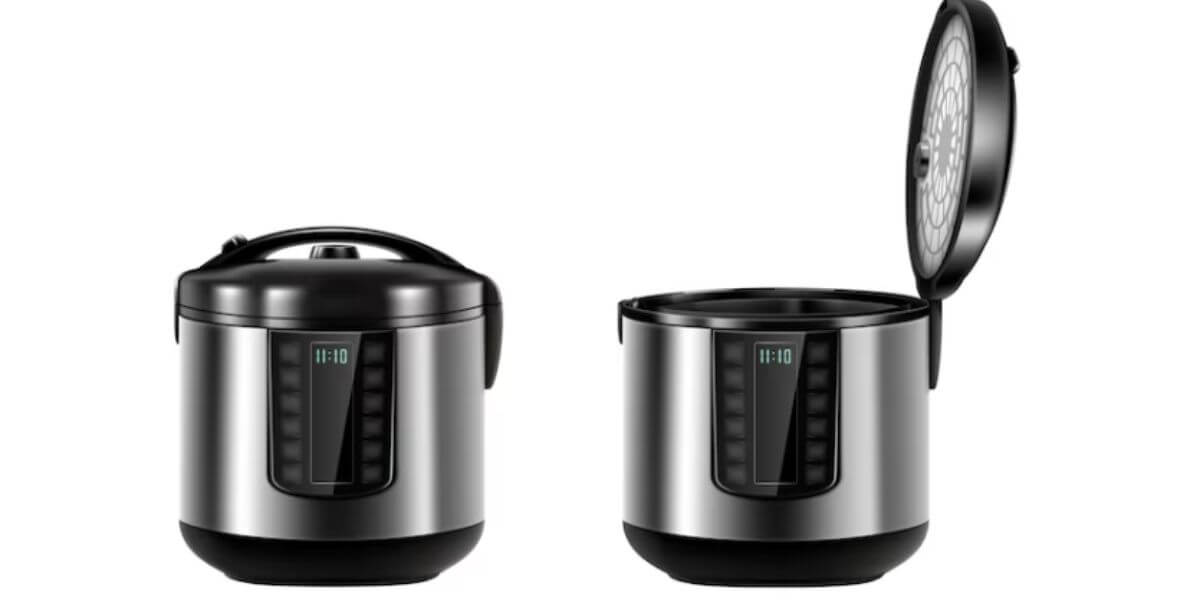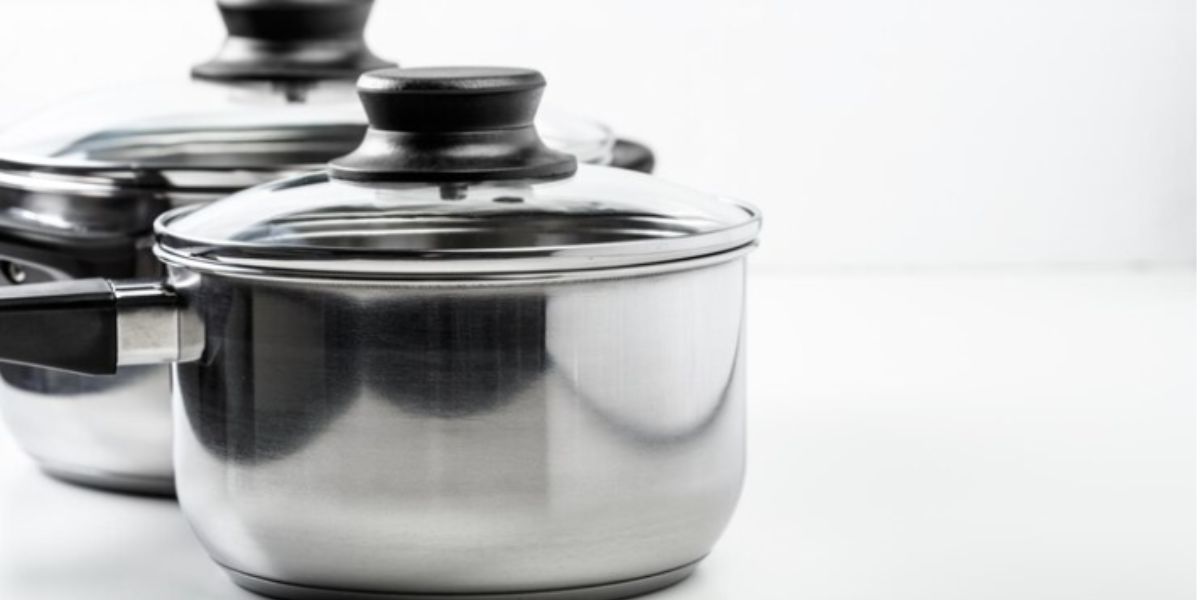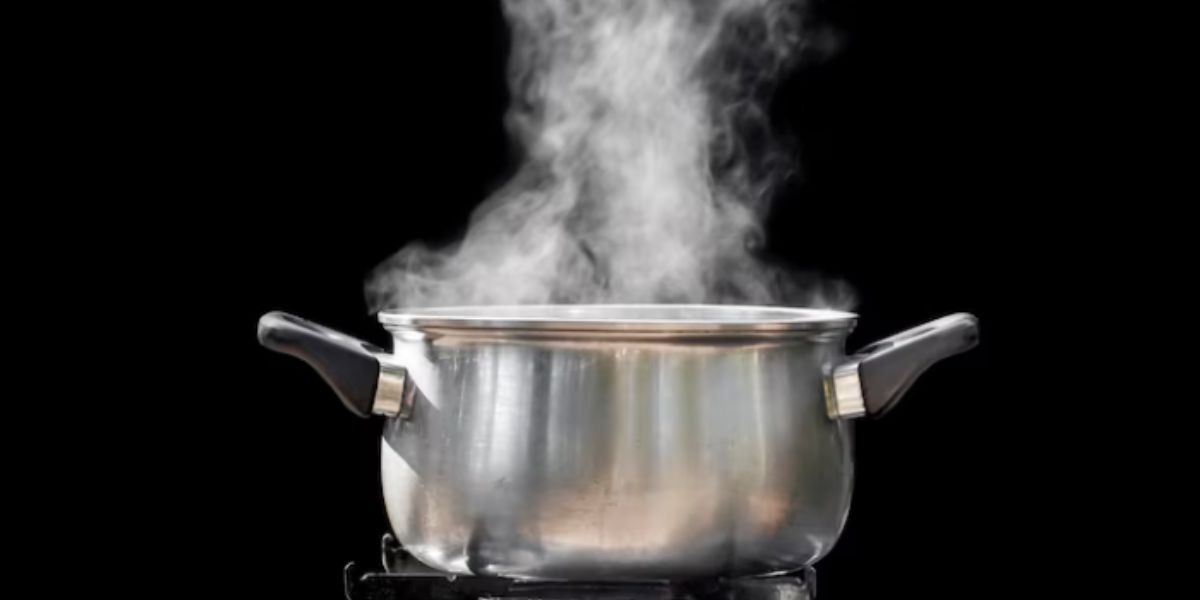Pressure Cooker vs Rice Cooker: Which One is The Best?


Regarding cooking appliances, pressure cookers, and rice cookers are popular in many kitchens. Both serve distinct purposes and offer unique features that simplify and enhance the cooking experience. Here we will explore the comparison of pressure cooker vs rice cooker, highlighting their functionalities, benefits, and when to use each appliance. So, let’s dive in and discover which cooker suits your needs best.
Overview of Pressure Cookers and Rice Cookers
Pressure and rice cookers are kitchen appliances that simplify cooking processes and save time. They both offer convenient ways to prepare meals but differ in their functionalities and the types of dishes they excel at cooking.
A pressure cooker is a sealed pot with a locking lid that traps steam, allowing pressure to build up. The increased pressure raises the boiling point of water, enabling food to cook faster. On the other hand, a rice cooker is a specialized appliance that automates cooking rice. It consists of an inner cooking pot, a heating element, and a thermostat to regulate temperature.
How Pressure Cookers Work
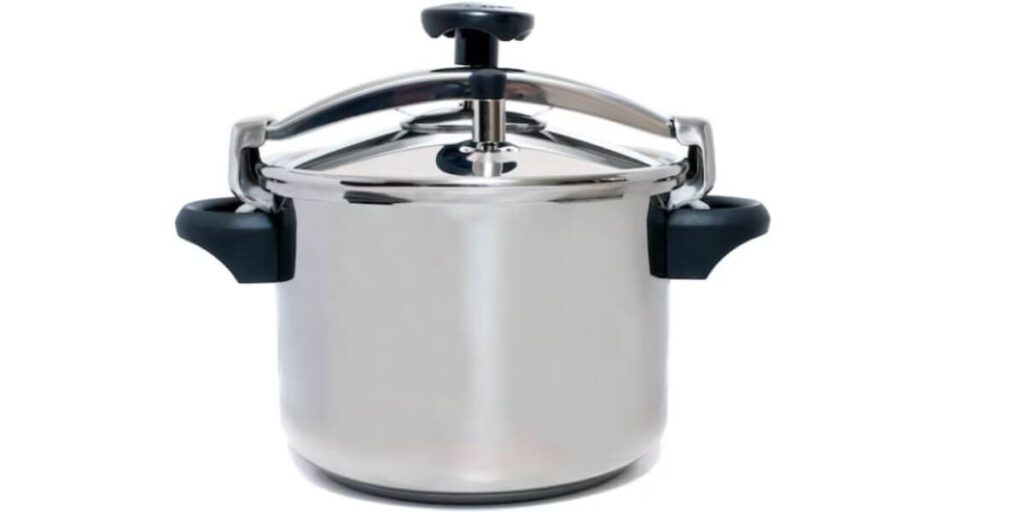
Pressure cookers work on trapping steam to create a high-pressure environment. When the heat is applied, the liquid inside the pot turns into steam, increasing the pressure. The high pressure raises the boiling point of water, which accelerates the cooking process. This allows for faster cooking times compared to traditional cooking methods.
The Benefits of Pressure Cookers
Pressure cookers offer several advantages:
Time Efficiency: The high pressure and increased temperature significantly reduce cooking times, making pressure cookers ideal for busy individuals who want to prepare meals quickly.
Versatility: Pressure cookers can handle many recipes, including soups, stews, roasts, and desserts. They can also tenderize tough cuts of meat in a relatively short time.
Nutritional Value: Due to reduced cooking times, pressure cookers preserve more food nutrients than traditional cooking methods.
Energy Efficiency: Pressure cookers require less energy to cook food since they operate at higher temperatures and shorter durations.
When to Use a Pressure Cooker
Pressure cookers are well-suited for:
- Cooking dishes that require tenderizing tough cuts of meat, such as pot roasts or braised meats.
- Preparing hearty stews, soups, and chili, infusing flavors into the ingredients in a shorter time.
- Making homemade stocks or bone broth, extracting rich flavors in a fraction of the time.
- Speeding up the cooking of legumes, grains, and certain vegetables.
4 Recommended Pressure Cookers to Buy 2023
Instant Pot Duo 7-in-1 Pressure Cooker:
The Instant Pot Duo is a highly versatile pressure cooker that combines the functionality of seven different kitchen appliances in one. It can use as a pressure cooker, slow cooker, rice cooker, steamer, sauté pan, yogurt maker, and warmer. Its easy-to-use control panel and multiple cooking programs offer convenience and efficiency in preparing various dishes.
PROS
CONS
Ninja Foodi Deluxe Pressure Cooker:
The Ninja Foodi Deluxe is a feature-packed pressure cooker that goes beyond traditional pressure cooking. It combines the functions of a pressure cooker, air fryer, and tender crisper, allowing you to pressure cook, air fry, and crisp food to perfection. With its TenderCrisp technology, you can achieve juicy and tender results while achieving a crispy finish outside.
PROS
CONS
Cuisinart CPC-600N1 Pressure Cooker:
The Cuisinart CPC-600N1 is a reliable and affordable pressure cooker option. It offers a 6-quart capacity and various cooking modes, including pressure cooking, browning, sautéing, and simmering. The user-friendly control panel makes setting cooking times and adjusting settings easy. It also features safety mechanisms such as a locking lid and pressure release valve for fast and worry-free cooking.
PROS
CONS
Mueller UltraPot Pressure Cooker:
The Mueller UltraPot is a budget-friendly pressure cooker that doesn’t compromise quality. With its large 6-quart capacity, it can handle various cooking tasks. It offers 15 preset cooking programs, including options for pressure cooking, sautéing, steaming, and more. The stainless steel construction guarantees durability, and precise temperature and pressure control are provided for repeatable results by cutting-edge microprocessor technology.
PROS
CONS
How Rice Cookers Work
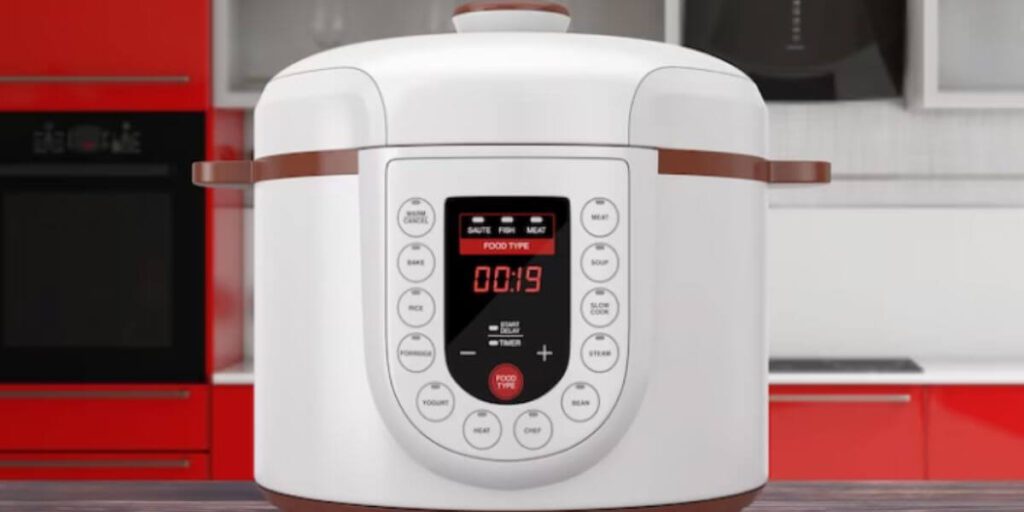

Rice cookers simplify the process of cooking rice by automating the timing and temperature control. The inner cooking pot is filled with the desired amount of rice and water, and the appliance takes care of the rest. The rice cooker enters a “keep warm” mode once the rice is finished cooking to keep the temperature stable until it is time to serve.
The Benefits of Rice Cookers
Rice cookers offer several advantages:
Ease of Use: Rice cookers eliminate the need for constant monitoring and stirring, providing a hassle-free way to cook perfect rice consistently.
Precision Cooking: With built-in temperature sensors, rice cookers ensure the rice is perfectly cooked, avoiding undercooked or overcooked outcomes.
Versatility: While rice cookers excel at cooking various types of rice, many models come with additional settings for steaming vegetables, making porridge, or even baking cakes.
Convenience: Rice cookers allow for delayed cooking, enabling you to set the desired cooking time and have the rice ready when needed.
When to Use a Rice Cooker
Rice cookers are ideal for:
- Cooking different types of rice, such as white rice, brown rice, jasmine rice, or sushi rice, with consistent and reliable results.
- Preparing steamed vegetables, dumplings, or fish on the steaming tray that often comes with rice cooker models.
- Making porridge or congee with preset settings that ensure perfect textures.
- Baking cakes or other desserts, thanks to the versatility of some advanced rice cooker models.
4 Recommended Rice Cookers to Buy
Zojirushi NS-ZCC10 Neuro Fuzzy Rice Cooker:
The Zojirushi NS-ZCC10 is a highly regarded rice cooker known for its advanced Neuro Fuzzy logic technology. It features multiple menu settings, including options for different types of rice, porridge, and even cake. Its precise temperature and cooking time control ensures perfectly cooked rice every time.
PROS
CONS
Instant Pot Duo Nova 7-in-1 Rice Cooker:
The Instant Pot Duo Nova is a versatile rice cooker with seven functions in one appliance. It can be used as a rice cooker, pressure cooker, slow cooker, steamer, sauté pan, yogurt maker, and warmer. Its large LCD and easy-to-use controls provide convenience and reliability.
PROS
CONS
Hamilton Beach Digital Programmable Rice Cooker:
The Hamilton Beach Digital Programmable Rice Cooker is a budget-friendly option that doesn’t compromise performance. It features a programmable timer and multiple cooking modes for various rice, grains, and hot cereal types. The non-stick inner pot and removable accessories make cleaning a breeze.
PROS
CONS
Tiger JNP-S10U-HU Rice Cooker:
The Tiger JNP-S10U-HU is a straightforward and reliable rice cooker that focuses on delivering perfectly cooked rice. It has a sturdy construction and a single-switch operation for simplicity. Its keep-warm function ensures that your rice stays warm and is ready to serve for extended periods.
PROS
CONS
Factors to Consider When Choosing One (Pressure Cooker vs Rice Cooker)
When deciding between a pressure cooker and a rice cooker, consider the following factors:
Cooking Needs: Assess the types of dishes you frequently cook and determine which appliance aligns better with your cooking needs.
Kitchen Space: Consider your kitchen’s available countertop or storage space, as pressure cookers are generally bulkier than rice cookers.
Budget: Compare the prices of different models and choose the one that fits within your budget while meeting your requirements.
Versatility: Evaluate the range of dishes you would like to prepare and opt for the appliance that offers the desired versatility.
Cooking Capacity: Determine the serving size you usually require and select a cooker to accommodate your needs.
A Comparison of Cooking Times
Pressure cookers generally cook faster than rice cookers due to the higher temperatures and pressures. For example, while rice cookers typically take around 20 minutes, a pressure cooker can cook the same rice in just a few minutes.
Cleaning and Maintenance
Both pressure cookers and rice cookers are relatively easy to clean. Most models have removable inner pots that are dishwasher safe. Following the manufacturer’s cleaning and maintenance instructions ensures the appliance’s longevity.
Safety Features
Pressure cookers have safety features like pressure release valves and locking mechanisms that prevent the lid from opening until the pressure is released. Rice cookers usually have automatic shut-off functions when the rice is cooked or when the water levels drop below a certain threshold.
Cost Considerations
Pressure cookers and rice cookers are available at a wide range of prices. Basic models are generally more affordable, while advanced or larger-capacity models with additional features may be more expensive. Consider your budget and the features that are essential for your cooking needs.
Versatility in Cooking Options
While both pressure cookers and rice cookers offer versatility, pressure cookers have a broader range of applications. They can handle a variety of recipes, including rice dishes while excelling at cooking meats, soups, stews, and desserts. Rice cookers, while primarily designed for cooking rice, may offer additional functions like steaming vegetables or making porridge.
Energy Efficiency
Pressure cookers are considered energy-efficient due to their shorter cooking times. By cooking food faster, they require less energy consumption compared to traditional cooking methods. Rice cookers are also relatively energy-efficient, but the difference in energy consumption between the two appliances is minimal.
Conclusion
In conclusion, pressure cookers and rice cookers are valuable additions to any kitchen, each with unique advantages. Pressure cookers offer speed, versatility, and the ability to tenderize harsh ingredients. Rice cookers provide convenience, precision cooking for rice dishes, and additional functions for steaming and making porridge or desserts.
When choosing between the two, consider your cooking needs, space availability, budget, and desired versatility. Both appliances can greatly simplify meal preparation and enhance your culinary experience.
Frequently Asked Question
Are pressure cookers safe to use?
Yes, as long as you operate your pressure cooker as the manufacturer directs. To avoid accidents, they have safety features installed.
Can I cook rice in a pressure cooker?
Yes, pressure cookers can cook rice, but rice cookers are designed explicitly for optimal rice cooking results.
Can I cook other dishes in a rice cooker?
Some advanced rice cooker models offer additional functions for steaming vegetables, making porridge, or baking cakes.
Are pressure cookers suitable for cooking large meals?
Yes, pressure cookers come in various sizes to accommodate different meal portions.
Are rice cookers only for cooking rice?
While rice cookers excel at cooking rice, many models offer additional cooking functions, allowing for versatility in the kitchen.
